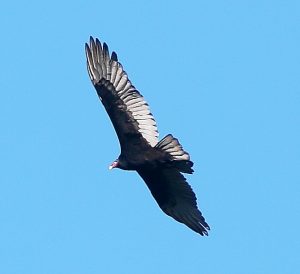
What It’s Like To Be a Bird
Just as most gardeners love to read seed catalogs in spring, most bird watchers enjoy reading bird books. There is a new bird book just published, by artist David Allen Sibley, called “What It’s Like to Be a Bird”. This is a beautiful book of Sibley’s outstanding paintings of birds, and newly revealed facts about birds. I am enjoying reading this book for its paintings, almost like a coffee table book, but am also learning newly discovered facts about common birds.
For instance, in reading about one of the most common bird in North America, the mallard, I learned that female mallards, sit on and brood their eggs for 28 days. During this time, she sits 23 of every 24 hours; a marathon brooder, who eats little to nothing while brooding. She has bulked up by feeding heavily during the preceding weeks. She broods by herself without help from the male. He may stay and swim back and forth to guard the nest, or he may fly off to an entirely different location.
A interesting early migrant, the Turkey Vulture, arrive here in March. It is immediately recognizable by its flight behavior. Vultures have extremely large wings for their size, and hold their wings in a V-shape, known as a dihedral. It always looks to me as if they are wobbly and tilting back and forth in the wind. Sibley explains that this manner of flying allows vultures to fly very low and slowly to pick up the scent of carrion. The dihedral shape is actually extremely stable at slow speeds. Any shift in the wind is countered by the bird’s tilting of its wings to even out the air pressure. This way they can fly slowly without energy-consuming flapping. Vultures have a well-developed sense of small, enabling them to detect carrion from a distance.
And Sibley tells us that, contrary to popular opinion, all birds actually have a sense of taste and smell. They have taste buds on the roof of their mouth and on their bill (though not as many as do humans), which enable them to detect the same tastes humans do: sweet, sour, bitter and salty. They can pick up an item with the tip of their bill, and the taste buds there enable them to assess whether or not this is something they want to eat.
I found interesting new facts about birds on almost every page of this book. Give it a look!
Many thanks to all flora and fauna reporters for the month of March. Please send reports by April 26, to be included in next month’s column. You can write me at 7A Old Colony Drive, call me at 692-3907, or e-mail me at mariancharman@gmail.com.
March Reports:
Rose O’Donnell, Sassafras Rd. March 1, bluebird and cardinal on the suet [Rose sent photos-MH] March 14, small bird built nest in the Christmas wreath hanging next to my door, but then she abandoned it. I found two small eggs [Rose sent a photo of a lovely little nest about 5″ wide, made of grasses and soft fibers, with two bluish eggs in it–matches field guide photos of house finch nest and eggs-MH]
Marian/Bill Harman, Old Colony Dr. March 2, ten degrees, high wind. Two male bluebirds at feeder-a first for us! Brown creeper, house finch. March 11, at Frances Hill Sanctuary, two barred owls talking to each other, pileated woodpecker, red-bellied woodpecker, lots of bird song, chickadees, titmice, downy woodpeckers, white-breasted nuthatches. March 12, Old Colony Drive, first grackles and red-wings are back–at least 100 of them. Cardinal pair, four chickadees, titmice, three juncos, two American tree sparrows, two Canada geese. March 13, 40’s, snow flurries, very windy. A walk to the meadow: grackles, red-wings, pond ice starting to break up. Three turkey vultures have arrived, circling low overhead, first skunk cabbage flowers are up. March 19, a walk to the beaver dam, 40’s rain and snow. A lovely damp smell of spring in the woods. Six turkey vultures kettling overhead. Much excitement of blackbirds in the pond swamp. Two are singing on territory at the Snake Meadow Brook swamp. Lots of jays, chickadees, titmice, cardinals singing. Pair of nervous mallards on the brook, heard a wood duck in the reeds. March 24, two juncos still here, four goldfinches (turning yellow), three chickadees, titmouse, blue jays, three mourning doves, one chipmunk, three gray squirrels.
Kate Hollister, Vine Brook Rd. March 3, red-breasted and white-breasted nuthatches, tufted titmice, black capped chickadees, cardinals, blue jays, juncos, mourning doves, downy and red-bellied woodpeckers, gray squirrels, brown creeper, one chipping sparrow, one flicker, one goldfinch, lots of holes in lawn (voles?) and mole runs.
Nancy Eberiel, at East Boston Camps. March 4, red-winged blackbirds heard, hooded mergansers seen on Stony Brook. March 15, bluebird at feeder. March 19, bluebird is back
Marilyn Day, Graniteville Rd. March 5, We stopped feeding birds, a couple of years ago. This morning, a swarm of chickadees and titmice, a pair of red-bellied woodpeckers, juncos, cardinals, and nuthatches all came to yard together, and left within 1/2 hour.
Rosemarie Koester, Providence Rd. March 4-6, a male flicker. “I have rarely seen this bird so was delighted”. At feeder, cardinals, purple finch, house finch, goldfinch, starting to turn yellow, titmouse, chickadee and nuthatch, doves, song sparrow, wren seen and heard, juncos still here as of March 25, red-winged blackbirds, up to ten juveniles, adults and females, grackles, and one cowbird, two pairs of blue jays, two robins, several turkeys, sometimes just a loner. Squirrels chasing one another, chipmunks, rabbits. On night camera, possible fisher and raccoon. Peepers heard near the convenience store on Main St.
Tom Ennis, Almeria Drive. March 6, Some ducks on Stony Brook today, swimming with some Canada geese. Smaller than the mallards, skittish, and flew off as we approached. Big spot of white on side of head [hooded mergansers? MH
Ron Gemma, Concord Rd. March 8, Ron sent a photo of a small dark bird on his deck.[Seems to be a fluffed up, dark bluebird-MH]
Margaret Wheeler, at Lakeside Meadows. March 8, great blue heron in the retention pond at Pond View Circle, with a pair of hooded mergansers.
Dag Williamson, March 15, “I’ve noticed that every kind of bird does seem to have a distinctive characteristic way of flying. Our cardinals, for instance, seem to have an undulating, dipping/gliding way of flying. Just as pleasant to the eye as their melodic singing”.
June Kennedy, Old Lowell Rd. March 14, ten hen turkeys and 3 puffed up toms, male house finch and a red-breasted nuthatch. Also, cardinals, chickadees, downy woodpecker, juncos and bluebirds.
Mike Killoran, Pine Ridge Rd. March 21, ” A bluebird couple has been inspecting a bird house in the back yard, in and out, with lots of chatter. Then another bird came along, maybe a house sparrow. It went inside and really upset the bluebirds. Lots of noise and the male would hover in front of the entrance but the sparrow held its ground. I already had a copper cover over the hole, one and a half inches diameter–the size they say online for bluebirds” [It seems you’ve done the best you can to keep the house sparrows out, Mike-MH] “The pilfering chipmunks are back. Last year they learned that by sneaking into the chicken coop, they can fill their cheeks full of chicken feed pellets and make a break for it while the girls are elsewhere in the backyard.” [ Your critters seem to be getting smarter every year-MH]
Emily Teller, Texas Rd. March 25, “What a cochcophony in the yard today. A phoebe calling from the tip of a tree, and others around. Neighbor got video of coywolf crossing her yard. A wood frog convention in the vernal pool on Hayrick Lane.
Marian/Bill Harman, near Vose Hill Rd., March 25, one or more bluebirds. Wood frogs heard near Shannon Circle detention basin. Also heard off Old Colony Drive.
Marian Harman is a member of the Westford Conservation Trust, a non-profit conservation organization, whose purpose is the preservation of Westford’s open spaces and trails. The Trust welcomes new members and volunteers. Check out the Trust’s website at westfordconservationtrust.org, and visit us on Facebook.
